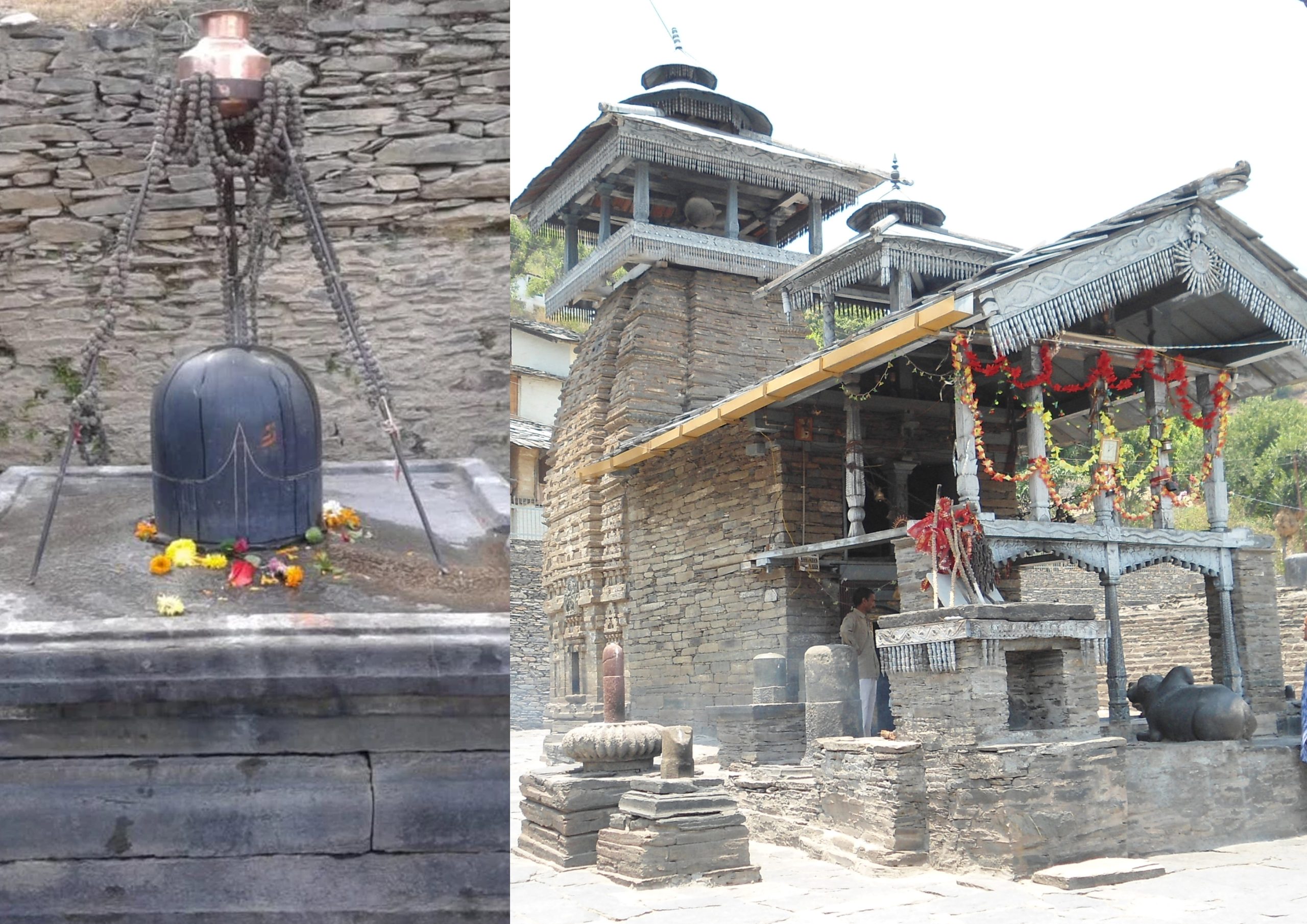The tranquil Dehradun district of Uttarkhand, India, is home to the Lakhamandal Shiv Temple, a destination rich in mythology, history, and spiritual significance. The historic temple, which is tucked away in the Himalayas’ lush vegetation, is a tribute to the region’s rich cultural heritage. Lakhamandal Shiv Temple attracts a large number of devotees, history buffs, and curious tourists interested in learning more about its enthralling legends, gorgeous architecture, and spiritual atmosphere.
Lakha Mandal is a venerable Hindu temple complex located in the Jaunsar-Bawar region of the Dehradun district, 75 kilometres from Mussoorie and 68 kilometres from Chakrata. ASI has designated this monument as a monument of national significance. It is a well-known historical site in Uttarakhand.
Lord Shiva is honoured in the Lakha Mandal temple. The Yamuna River and stunning mountains surround the temple. The terms lakha, which means many, and mandal, which means temples, are combined to form the name Lakhamandal. The Shakti Cult flocks to this temple frequently because they think that going to the shrine there will put an end to their woes.
The princess Ishwara of the Singhpura Royal race is credited with building the Shiva temple at Lakhamandal, according to a stone inscription from the sixth century AD. It was created for her late husband, Chandragupta, the son of the monarch of Jalandhra, to benefit spiritually. The current Nagara-style building was constructed between the 12th and 13th centuries AD.
The mythology claims that Duryodhan attempted to kill the Pandavas at Lakhamandal by forcing them to reside in the wax-made Laksha Griha. But happily, the Pandavas were able to flee by entering a cave. At a distance of 2 kilometres from the Lakha Mandal shrine, the cave’s other end may be seen. In the local Jaunsari language, this location is referred to as Dhundhi Odaari, which means hazy.
The graphite Lingam is this Hindu shrine’s primary draw. When water is sprayed on it, it glows and reflects the environment. On a rock inside the temple complex, one may see the newborn Parvati’s footprints. Shiva, Parvati, Kartikeya, Ganesha, Vishnu, and Bajrangbali are all represented by idols. Two 6-foot-tall statues of the temple’s dwarapalakas are located next to this temple. Some individuals think that these monuments represent the Pandava brothers Bhima and Arjuna.
Ancient sculptures, inscriptions, and temples abound in this region. There is a museum that houses a variety of statues and lingas. There have been uncovered about 150 stone carvings, some of which date back as far as the fourth or fifth century.
On the 5th of April, the Baishakhi festival is grandly observed here and is visited by a sizable number of believers.
7 a.m. to 6 p.m. are the hours.
Historical Background
Lakhamandal Shiv Temple is an exceptionally old location, with its beginning dating back to the time of the Mahabharata. Hindu legends hold that this is the location where Duryodhana, a significant figure from the Mahabharata, allegedly tried to burn the Pandavas alive in a lac home (laksha griha). According to legend, the temple suddenly appeared, and Lord Shiva intervened to protect the Pandavas from the dangerous flames.
Legends and Myths
Lakhamandal Shiv Temple is linked to a number of intriguing legends, in addition to its connection with the Mahabharata. According to one of these legends, the temple gave the Pandavas shelter and security when they were in exile. An additional tale adds to the temple’s historical and spiritual significance by claiming that Lord Rama built it while he was in exile.
Symbolism and Rituals in Religion
The Lakhamandal Shiv Temple is extremely significant to Lord Shiva worshippers in terms of rituals and religion. It is thought that praying and carrying out rituals at this hallowed location can bring benefits, divine intervention, and wish fulfilment. Devotees frequently travel on pilgrimages to find comfort and enlightenment. During the holy dates of Shivaratri and Shravan, which draw worshippers from far and wide, the temple is especially packed.
Concerning the Area
Outside of the temple, Lakhamandal’s scenic surroundings give tourists an opportunity to relax and get in touch with nature. There is a calm and revitalizing energy brought on by the Himalayas, babbling rivers, and lush green forests. To experience the natural splendour of the area, one can engage in activities like hiking, camping, and nature walks.
Conservation and restoration
The Lakhamandal Shiv Temple has undergone preservation and restoration over the years to ensure that its historical and cultural relevance remains. With the intention of preserving this architectural marvel for future generations, the Archaeological Survey of India (ASI) has taken steps to protect the temple and its ancient artefacts.
Location and Directions to Lakhamandal
On the Mussoorie Road, Lakhamandal is about 100 kilometres from Chakrata. Visitors can take a bus or a taxi from Chakrata to Lakhamandal.
The ideal time to visit Lakhamandal Temple
The entire year is the ideal time to visit this shrine. Visitation immediately following the monsoon is advised for the most picturesque vistas.








0 Comments